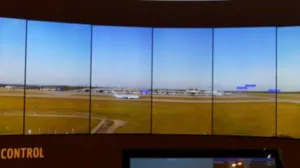
This was one of those weeks when there wasn’t a lot of news that was suitable for the front page. Still, we found plenty to talk about. I had hoped to get the report finished on the Leyard showroom event, but didn’t quite make it as we also attended the Wearables show in London. This was co-located with a small VR/AR event, but it proved to be more interesting than we expected. We also got the report on the ATM congress done this week.
Next week, the sequence of specialist events gets us to Stockholm to see the Passsenger Terminal Expo. Data Modul told us that it decided not to attend PTE as it is not expecting many visitors, but that’s not a problem for us! After that, we’ll be on to bigger events.
AR and VR continue to be an interesting topic and very impressive is the speed of development of the technology. As technology barriers get overcome, the applications will become more and more compelling. At the Wearables show, we saw a compelling demonstration of a real world scene processed photographically and used as textures on a 3D scene. It’s for professional applications and it was interesting to compare it with typical VR configurations, which are based on CGI rendered environments.

At the ATM Congress, there was also, effectively, a demonstration of AR. As we have detailed in our report in LDM, companies are using very high resolution 360 deg cameras (21K x 4K or more) produce images of airports with the same resolution as 20/20 vision. These are then displayed on large display arrays with infrared with object-related data overlaid. They are. effectively, very large VR displays, augmented with data and mean that control towers can be ‘virtual’. Air traffic management for remote airports can be handled by a central location.
However, the use of video walls to show the images limits the display to one location at a time. If you could use the kind of 18 megapixel per eye display that Google has developed with LG Display (as reported in MDM), a very compelling virtual experience could be created that could allow a small team to monitor multiple locations. Combine that kind of display with the kind of photo-realistic imagery shown in London and the number of applications for VR will surely multiply, although the limits of the physical size and weight of current headsets would put me off using one for very long.
Anyway, it’s fun to go to different events over a week and see how very different applications and systems can feed off the developments in each area.
Bob

